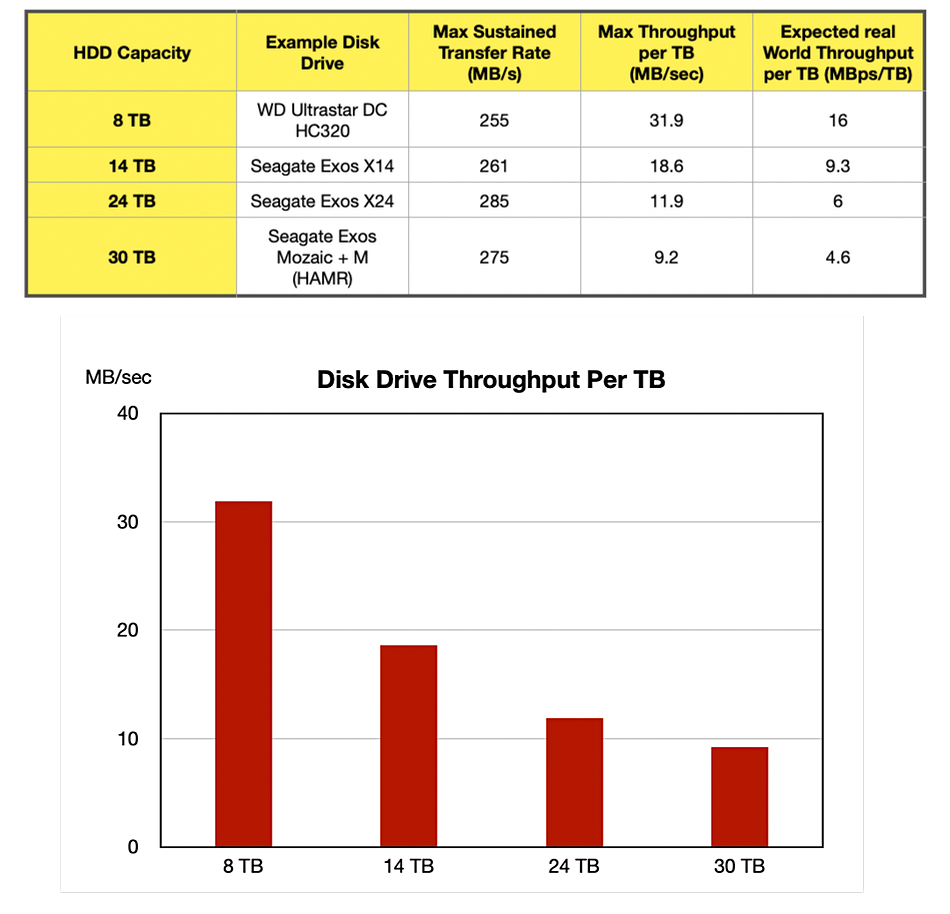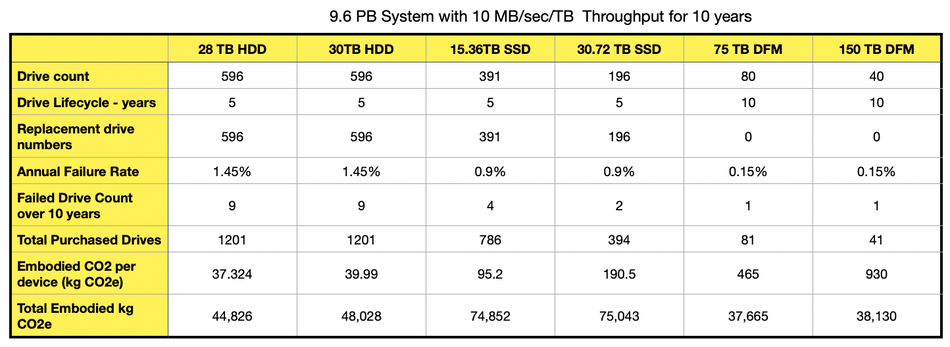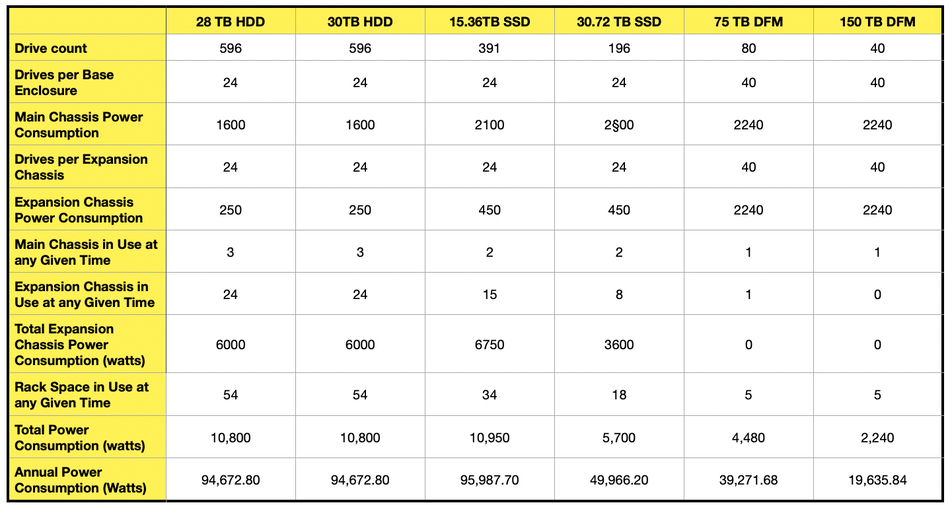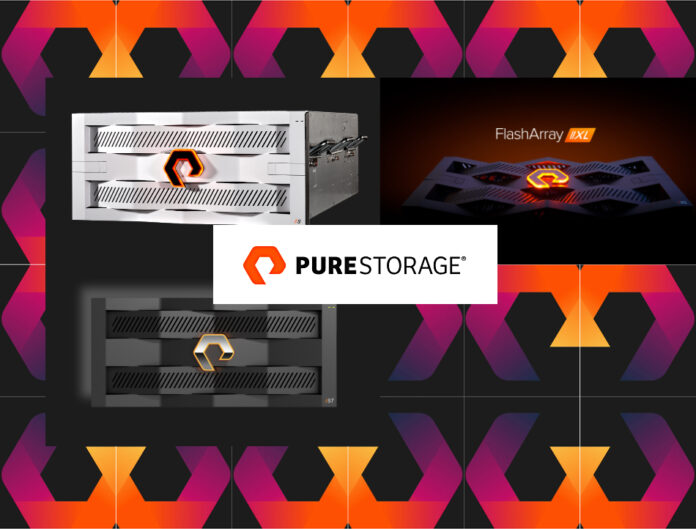Pure Storage looked at the VAST/Solidigm SSDs vs HDDs white paper and thought that its device-level TCO comparison was not all there was to say. The company claims that its Direct Flash Modules can do better than either alternative, specifically on power usage and embodied Carbon.
This is because its Direct Flash Modules (DFMs) having larger capacities than SSDs, and being managed at the system instead of the drive level, are needed in lower numbers to meet capacity or throughput targets and so need less electricity to operate. There is an embodied carbon advantage with its DFMs having less of this than either disk drives or commercially-available SSDs.
It also believes that just calculating the TCO does a disservice to potential buyers as “a fairly common performance requirement for cloud storage and archival tiers for throughput-optimized HDD applications (i.e., AWS st1, sc1, etc.) is an MB/sec level”, such as 10 MB/sec/TB. This, it says this is a “performance target for the storage system comparison.”
Pure sent us a trio of spreadsheet-style tables. To set the scene, it laid out a first table showing how HDD throughput and throughput-per-TB changes as disk drive capacity increases. We’ve added a Max Throughput per TB chart to the table:

There is an IO density problem here as, relative to its capacity, disk drive throughput decreases as capacity rises. Pure says that the problem is worse, as theoretical maximum throughput numbers are not achieved in real world conditions: “Layering in the real world characteristics for workload composition(aka not 100 percent sequential 100 percent of the time, disk is at least 50 percent full), expected throughput falls from 16 MBps/TB at 8TB to under 5 MBps/TB at 30TB
Having hammered this point home, it then specs out six theoretical systems which each have a 10MB/sec throughput requirement for 10 years and an effective near 10 PB capacity. There are two HDD systems, using 28 and 20 TB drives, two SSD ones with 15.36 and 30.72 TB drives, and two Pure systems with 75 and 150 TB DFMs. All the systems share the same 2:1 data reduction ratio.
It then calculates the total embodied carbon for each system and, separately, the electrical power needs. It doesn’t provide a TCO calculation as that would necessarily include its pricing details. Here are the embodied carbon table numbers:

It assumes a 5-year lifespan for the disk drives, necessitating the disk drives and SSDs being replaced halfway through the 10-year period, but not the DFMs as they have a warranted 10-year life. It also adds in a few replacement drive purchases based on annual drive failure rates.
We charted the final row;

As expected, the SSDs have a higher total than the disk drives, but Pure’s DFMs have a lower total than either, as their per-drive capacity is so much higher and they have a system-level controller function, not drive-level controllers.
Pure then supplied a power consumption comparison table for the same six systems, making allowances for the drives being housed in base system chassis and expansion chassis;

Naturally, we charted the final row again, to draw out the annual power consumption;

The 15.36 TB SSD system has the same power consumption, more or less as the disk drives. The 30.72 TB SSD system has about half that level. The HDD (and 15.36 TB SSD) systems need 2.4X more electricity than Pure’s 75 TB DFM system, but 4.8X more than Pure’s 150 TB DFM system. We might expect this advantage to increase once Pure starts shipping 300 TB DFMs towards the end of the year. And this would apply to the embodied carbon numbers as well.
Pure comments: “At the system level, flash outperforms HDDs not just in speed and density but also in sustainability, cost, and reliability. The performance-per-TB collapse in HDDs has rendered them obsolete for many enterprise needs. Flash storage options, particularly those built with Pure Storage DFM, result in far fewer devices, less energy consumption, and significantly lower embodied CO2e emissions compared to traditional HDD and SSD systems.”








